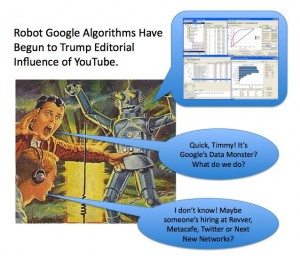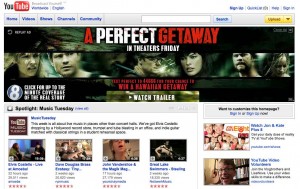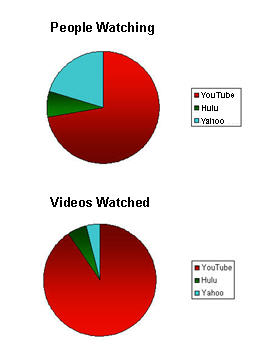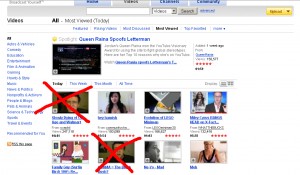The Wall Street Journal reports that a 100-person Utah company, led by CEO Roxanne Austib, has raised more than $67 million from some prominent backers that include Microsoft Corp., Comcast Corp. and Walt Disney Co.’s venture-capital arm. The goal? Bring television video to homes via the Internet. I know. Crazy, right? What next? A computer in every home?

If the company pulls it off, you could watch programs via the web, your television-shaped monitor (via a converter box unless it already has an Internet jack or wireless receiver), or via your stupid iPhone or iPad (which some bastard called “the fourth screen” today at a conference, and made my omelette travel back up my throat).
But you won’t.
“…Move isn’t laying cable or launching satellites (so it says it)… can charge consumers far less than traditional pay-television operators for a comparable suite of channels. Move hopes to undercut those operators further by offering a pared-down lineup-perhaps as few as 80 to 100 channels.”
Here’s where it gets interesting. Comcast just launched a service called TV Everywhere that, um, uses Move software to provide its paying prisoners free on-demand access via the web. So will Comcast keep Mmmmoving? Or drop Move like Time Warner dropped its retarded older stepbrother AOL? I’d expect a bloodbath, and I will enjoy every moment. As the WSJ acknowledged, this “could turn cable providers into little more than utilities, maintaining thousands of miles of dumb pipe-pipe through which Move’s snazzily repackaged TV programming would be flowing.” Say what you will about Comcast, but I don’t think it will become a dumb pipe without a fight.
Would you like to know the very sad “secret weapon” cable maintains? We’re change-adverse, lazy idiots.

We take don’t like breaking up with important service providers even when they suck (how many excuses have you used to avoid adopting voice-over-IP?) We default to whatever damned boxes our cable/fiber/phone providers install. The model T Ford comes in black and black. We are statistically proven to prefer the burger with the McDonalds wrapper against the exact same burger wrapped in white paper.
We don’t trust new companies- especially on something important like a utility. What? Clear? Saw them at BestBuy and in lots of newspapers and billboards. But who are they? Verizon’s my phone company. It’s the only one I’m allowed to use. Just like the US Post Office is the only way I can send a letter. Groceries delivered via web order? No I like to smell my canned food before I buy it.

Take TiVo for example. It’s better, but few Comcast or Verizon customers realize they don’t have to put up with the TRS80-like machines the cable/telecom companies issue like obligatory military uniforms. Even better, the AppleTV (for $200) will give you every damned television show or movie you could ever want for a couple bucks and 2 clicks… with no stupid monthly obligation. Do we buy them? Nope. We’re saving up for an iPad as big as a goitre.

So perhaps Move soars over every hurdle and obstacle that cable and telcom companies can lobby into its way. Then it manages to (with a nervous and tempered endorsement from big media and tech players) launch a less expensive, easier, high-quality offering that effectively makes Comcast/Verizon a giant Bill-Murray wielding hose… Some early adopters try it and love it. They tell all their pretend virtual friends. But unless 100% of that $67 million is going into mass advertising, we unwashed masses remain confused, and stick with our drunk & swearing spouses we call cable/telecom. It’s our fault they abuse us.

Yes, we unwashed masses continue overpaying for never-used cable channels, ignoring the blinking 12:00 on the Betamax, and continue our 45th year of renting standard-issue 30-pound rotary phones for $5 a month from Ma Bell. We unwashed masses already tried your fancy microwave machines and facsimile phones, and that will be enough for now.




 Read Larry’s
Read Larry’s  Every day, I run across FEAR of marketing on the Web. We’ve got to work together to help people overcome this fear in 2010.
Every day, I run across FEAR of marketing on the Web. We’ve got to work together to help people overcome this fear in 2010.







